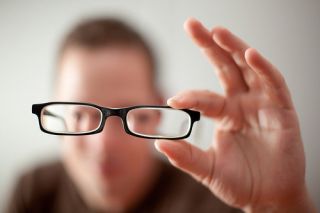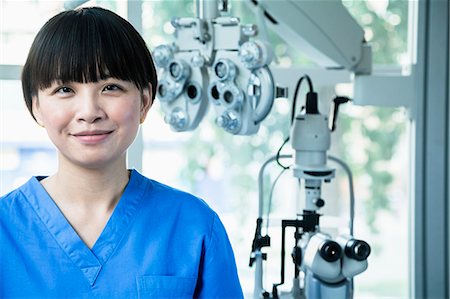Can Your Distance Vision be Saved?
Myopia, also known as nearsightedness, is on the rise and it is the most common eye refractive error in both children and adults.
Myopia is regarded as a global epidemic. In fact, a recent study by the American Optometric Association concluded that more than 40% of Americans are myopic and that number is increasing – especially among school-aged children. It was reported that 1 in 4 parents have a child with myopia and approximately 75% of those children were diagnosed between the ages of 3 and 12.
These numbers are alarming; one study found that the prevalence of myopia has increased by 8% over the last 15 years. So with all the modern advancements in eye care, can myopia be cured? And if not cured, managed or treated successfully? Let’s uncover what can be done for myopic children and adults in order to restore distance vision.
Can Myopia be Cured?
As of 2020, there is no cure for myopia. However, some treatments and management strategies can help restore distance vision. The success of these strategies depends largely on whether the patient is an adult or a child.
Before we get into treatments, let’s discuss myopia in more detail so we understand how it starts and why it develops.
What is Myopia?
Myopia is a refractive error that allows individuals to see objects up close, while distant objects appear blurry and out of focus.
The reason for this focus error is the shape of the eye: as the eye develops and grows, it can become elongated or the surface of the eyeball may become curved. This causes light rays to focus at a point in front of the retina, instead of directly on its surface.

Myopia Peaks At Adulthood
Although classified as a progressive condition, the growth stage of the eye is typically completed by early adulthood. This means the natural shape of the eye is established and should not become more curved or elongated over time. Whatever degree of myopia an individual has at early adulthood should stay relatively stable, and changes in distance vision generally do not continue to progress.
However, there are exceptions to this rule. Myopia can sometimes worsen in adulthood for many reasons, including:
- Over-focus on close objects
- Traumatic brain injury or eye trauma
- Health conditions such as diabetes
If this is the case, contact your optometrist. There are several specialized and custom treatments that can help patients in these unique situations.
Myopia Management & Treatment
Although there isn’t a cure for myopia, there are several management and control methods that are proving successful. These differ according to your age and the developmental stage of your eyes.
Adult Myopia Control
For adults whose eyes have fully matured, there are a few myopia control options available:
Laser Eye Surgery
For adults, myopia can be reversed with refractive surgery, also called laser eye surgery. A laser is used to reshape the corneal eye tissue and correct the refractive error.
Laser eye surgery is not recommended for children. In fact, the FDA has not approved laser surgery for anyone under the age of 18.
Prescription Lenses
Wearing corrective glasses or contact lenses corrects myopia by changing where light hits the retina, turning previously blurry images into clear ones. Prescription lenses bend the light, allowing it to focus properly on the focal point of the retina.
Myopia Control for Children
Myopia in children works a little bit differently. Because the eye is in an active growth state, the progression of myopia may be slowed until a child’s eyes stop growing.
If your child has myopia, and their eyes are changing rapidly, there are a few promising management strategies that may help.
Atropine Eye Drops
Atropine eye drops have been shown to significantly slow the progression of myopia in children. Two large trials in Asia found that atropine drops slowed children myopia progression by 50%-60%. However, because myopia is not curable, children who use atropine drops may still need to wear glasses or contact lenses.
Multifocal Glasses & Contact Lenses
A study conducted by the American Optometric Association’s Contact Lens and Cornea Section (CLCS) found that children who wore multifocal lenses saw their myopia progression slow by approximately 25%, and they had 31% less axial elongation (longer eye length) than children who wore single-vision lenses.
Orthokeratology
Also known as ortho-k, orthokeratology uses specially designed gas permeable contact lenses to temporarily reshape the eyeball while you sleep. In the morning, the lenses are removed and you have clear vision without the use of contact lenses or glasses. Ortho-k has been shown to slow myopic progression in children by 36% – 56%.
Natural Light & Outdoor Activity
Although studies are ongoing, recent controlled trials show that children who spend more time outside (up to 14 hours a week or more) have less myopic shift and axial elongation than children who spend less time outside.
Monitor Time on Devices
Another ongoing field of study is the relation between near work activities and myopia progression. While not 100% conclusive, many preliminary studies show that near work activities, like using a phone or computer, are associated with myopia. For that reason, we recommend monitoring the time your child spends on a phone or other digital device.






Recent Comments